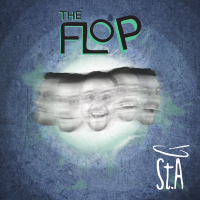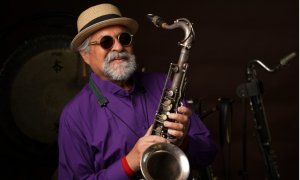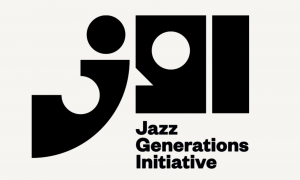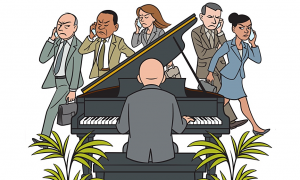Anatole Litvak's Blues in the Night (1941) and Jack Webb's Pete Kelly's Blues (1955), which were released this month by Warners on DVD, reversed the perspective. These are Warner gangster pictures told from the band's point of view: Idealistic white jazz players, determined to play their music despite rude audiences and mob interference, win the day with inadvertent or vengeful help from mob apparatchiks, thereby saving them from the arms of the law. It isn't clear what saves them from other mobsters.
Everyone interested in the subject has seen, or should see, the generally available Round Midnight (1986), by Bertrand Tavernier, and Bird (1988), by Clint Eastwood, also released by Warner in the same package two films that situate jazz in the world of its black innovators. The earlier films, though, are rarely seen, as is a forthcoming Criterion Collection release from Britain: the 1949 Michael Powell and Emeric Pressburger wartime drama The Small Back Room, which isn't about jazz but has a jazz twist.
The films by Webb and Litvak had to confront as did all of the myriad jazz-related pictures made in the studio era the embarrassing fact that they were obliged to dramatize black music as represented by white film actors. Blues in the Night handles it by having the band thrown in jail, where, in a segregated cell, the uncredited Ernie Whitman announces that everyone's got the misery, and to prove it, the uncredited William Gillespie moans Blues in the Night written by those sons of the blues, Harold Arlen and Johnny Mercer.
The blacks seem to be truly miserable, but the whites are overjoyed to hear authentic misery, and their leader, Jigger (Richard Whorf), spends the rest of the film attempting to compose Blues in the Night, which is never performed in its entirety. The film's credits omit another racial crossing: The trumpet playing by a band member played by Jack Carson is mostly dubbed by Jimmie Lunceford's celebrated lead t rumpeter, Snooky Young. Lunceford's band appears as a New Orleans band, though his rigorous brand of swing is as close to New Orleans style as, say, Blues in the Night is to blues.
All of this would be borderline offensive, especially given the vaunted singing by the band's canary, Priscilla Lane, who couldn't swing from a trapeze. But the film is saved by many things, among them Litvak's speed, Ernie Haller's stylish (noirlike) photography, a sporadically witty Robert Rossen script (which reaches its apex with a spot-on parody of Mickey Mouse sweet bands), and the cast, which includes two Group Theatre veterans (informer Elia Kazan and martyr Howard Da Silva), as well as Lloyd Nolan (as chief gangster), Betty Field (as the femme fatale), Wally Ford (as a gimpy eunuch), and Peter Whitney (as a hulking bassist).
Blues in the Night features lots of talk about who's in or out of “the groove," as well as a few montages by Don Siegel, including an obligatory insert of blacks picking cotton and lifting bales, and a surreal alcoholic hallucination that liberally borrows from German expressionism and prefigures a similar sequence in “The Small Back Room." The band isn't much (Whorf mimes piano playing by Stan Wrightsman), but the climactic shootout in the rain is generically sound.
If Blues in the Night is mostly a curio, the DVD it's on is made savory by the extras: Gjon Mili's Jammin' the Blues is, at 10 minutes, the greatest jazz film ever made. Also included is a Jimmie Lunceford short, plus three Looney Tunes (two with Blues in the Night woven into the scores), including Swooner Crooner, which not only replays the rivalry between Bing Crosby and Frank Sinatra, but directly relates crooning to fertility.
For its part, the vastly superior Pete Kelly's Blues is handsomely transferred to an otherwise skeletal disc the film deserves a commentary track if only to annotate the mostly superb music and the many inside jokes about jazz and Prohibition. Indeed, the film despite its shootings, dipsomania, and insanity often plays as a comedy.
Webb originated Pete Kelly on the radio (for a three-month run in 1951), having already scored on radio and television with Dragnet. Working with his usual writer, Richard L. Breen, the Disney production designer and fellow Dixieland addict Harper Goff (who is in the film, playing banjo for Janet Leigh), and Webb's Army buddy, trumpeter Dick Cathcart, who plays the solos Pete Kelly mimes, Webb set out to re-create 1927 Kansas City in Technicolor and wide- screen. And, as directed in his long-take style, the music is never interrupted.
The homage to blacks and misery is taken care of in a pre-credit sequence that re-creates a 1915 New Orleans funeral for a musician whose cornet falls out the back of the hearse. The camera stands as still as the mourners for a solid minute as trumpeter Teddy Buckner plays a hymn. A few years later, Kelly (Webb), in short pants, wins that same cornet in a New Jersey craps game. By the time the credits roll, 12 years have passed.
One of Webb's conceits was to cast against type: Thus, Lee Marvin is Mr. Nice Guy, a clarinetist whom little Pete coldcocks twice; sweetheart Janet Leigh is an heiress and sexual predator; Andy Devine, then of TV's Andy's Gang, is a tough but honest cop; singers Ella Fitzgerald and Peggy Lee are, respectively, a gin-mill owner who sings and a gangster's moll who sings and goes crazy; ordinary guy Edward O'Brien is a ruthless mob boss and would-be band booker a part he parodied a year later in Jayne Mansfield's breakthrough The Girl Can't Help It, though at times he seems to be doing the parody in Pete Kelly's Blues (in which Jayne Mansfield appears as a cigarette girl). A memorable character is the club owner Rudy (Than Wyenn), who counts anchovies on the pizzas, manufactures champagne with a seltzer siphon, and samples customers' drinks before they exit the kitchen to make certain they are watered down.
Webb's performance, though often mocked, is mostly effective. Bow-tied and low-key, he moves with casual self-possession, handles props with focused deliberation, and spits out a stream of memorable one-liners. He stages almost all his scenes so that he is facing forward, usually tucking his hands in his pockets, as he clearly doesn't know what to do with them in the absence of props. (Note the scene in which Marvin's character says he's leaving town who could have chosen Webb's hideous sweater?) The film always looks great, and the long takes are as tableaux, sometimes with canny camera movements Hal Rossen's camera covers a 4-minute hotel bedroom scene involving Webb and Leigh's characters and a canary with a single shot, and handles Lee's major scene in five unbroken minutes. Talk about editing in the camera: no inserts, no over-the-shoulder conversations.
Poorly reviewed in its day, Pete Kelly's Blues made money, revived the Dixieland craze, influenced a host of Roaring '20s films and TV shows (including at least two more gangster films with musicians in the foreground, The Joker is Wild and Some Like It Hot) and, thanks to Fitzgerald's riveting performance, made an unlikely 1950s hit of the 1924 song, “Hard Hearted Hannah."
The Small Back Room, which Criterion will release on August 19, is a study in alcoholism and of the conflict between wartime soldiers and civilian masters, as well as a bomb-defusing thriller (prelude to Richard Lester's 1974 Juggernaut). It has a splendid cast (Kathleen Byron is unforgettable), many Powell visuals, and Pressburger quips: “Pardon?" “Granted." It also has several nightclub scenes featuring “Ted Heath's Kenny Baker Swing Band" (saxophonist Johnny Gray, with shoe-brush mustache, is prominent). The remarkable thing is that the band's arrangements are pure bebop, not swing fitting for 1949, but quite prescient for a film set in 1943. Still, they are very fine.
For more information contact All About Jazz.



























